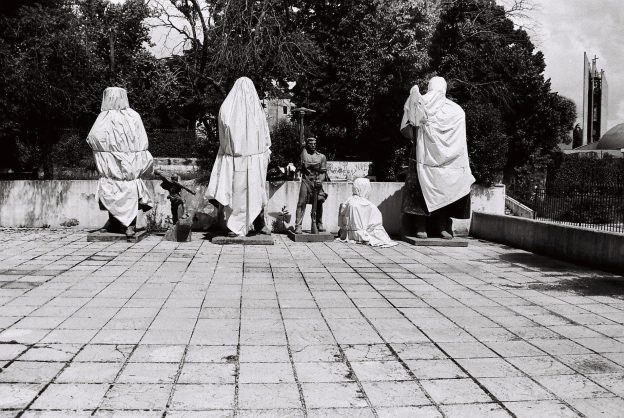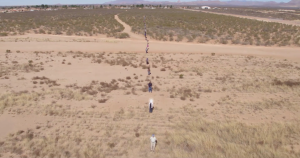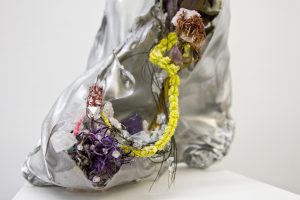with CONQUERORS; TIRANA, ALBANIA & MONSTER; GHENT, HUDSON VALLEY, NEW YORK
photographs by PAMELA COHN
My first memory of saying something racist is from when I was four. I was with my mother and her friend in our Brooklyn kitchen. My mother, descended from German Jews, has light hair and green eyes. Her friend, like me, has dark hair verging on black and olive-toned skin.
“You aren’t Black?” I said. “Are you?”
Startled, she shook her head.
“Oh,” I replied. “Good!”
They must have wondered how, in this ‘liberal,’ open-minded home, I’d arrived at this certainty that it was better to be white than to be Black. Certainly, it wasn’t something my parents told me. As in the majority of white American households, race wasn’t a topic we discussed at all.
Studies by researchers like Kristina R. Olsen, PhD now show that children as young as two or three have already internalized racist views, regardless of their parents: the ideology of racial hierarchy is, to borrow Beverly Tatum’s metaphor, like smog: “sometimes it is so thick it is visible. Other times it is less apparent, but always, day in and day out, we are breathing it in.” Whether we want to or not, and whether our families resist it or not, all of us who grow up in this culture receive endless messaging—some subtle, some blatant—that white-bodied people are superior.
I wrote that that was my first memory of saying something racist, but to be honest, it’s the only one I have. Not because my racism vanished, but because I learned that to express racism overtly was socially unacceptable. I was born in 1983, three years before Ronald Reagan declared that racial progress meant to perform colorblindness—an ideology whose grip is only beginning to loosen. It wasn’t only at home where race was avoided, but in my classrooms, on television and in movies, in conversations I observed among kids and adults.
A more recent memory of a racist thought—this time, unexpressed. Out with friends at an Irish pub after a poetry reading on Lake Street, near the border between Minneapolis and St. Paul. It had been only a few months since the United States had elected Trump, a man who journalists like Vox’s German Lopez have shown, has a profound history of racism whose campaign revived the foundational American tradition, dating back to the seventeenth century, of elites dividing working class people by race to maintain power. We sat in a big, U-shaped leather booth. Everyone there was white except for one woman of color: a Black, biracial friend. She leaned over the table as she spoke. “I mean, wouldn’t it be amazing,” she said, “if we could have a future where race just didn’t exist?”
That future is one that, theoretically, by that point I had committed to working toward: training to facilitate anti-racism dialogues, attending anti-colonial workshops, and participating in organizations like Showing Up for Racial Justice (SURJ). But the reality felt (feels) so far off that I’d never pushed myself to actually, viscerally, imagine how I’d experience it.
In that moment, reflexively, I did. And what I felt wasn’t the joy or liberation collectively envisioned in those movement spaces I’d begun to frequent. It was the opposite: terror.
A hollow core in my stomach and tightness in my chest.
Of what was, of what am, I so afraid?
Among the pillars of white supremacy is the lie of meritocracy: the idea that power and wealth are earned, and that those who hold such things therefore deserve them. This idea clashes directly with widespread evidence of systemic racism as reported widely in news outlets and research organizations — from profound gaps between white and Black (and other non-white) Americans in home ownership, family wealth and incarceration rates, to studies about banks denying Black people home loans and employers denying job interviews, there is overwhelming data to show that one’s racial (along with class) background provides a far greater predictor of success than smarts or skill.
But humans are gifted when it comes to holding conflicting ideas at once, particularly those that benefit us. So it makes sense that many white people hold onto the illusion of meritocracy as a way to justify a ‘natural’ order in which some groups (white-bodied people) disproportionately succeed and others (Black-bodied, non-white and poor people) don’t. It provides a more polite version of the required, attendant belief: that lower-achieving groups are biologically inferior—not swimming upstream in a system that profits from their oppression.
Like many parts of the system that sociologist Joe Feagin calls the “white racial frame,” the myth of meritocracy is one of those elements of the status quo whose extreme expression can be easy to call out as racist, but whose subtler manifestations white-bodied people who think of themselves as ‘liberal’ and ‘progressive’ can easily miss and commonly enact.
One of these subtler modes is the notion of exceptionality: a sort of dark marriage between meritocracy and individualism. We celebrate high-achieving individuals because we aspire to be how they are, exceptional—either due to innate talent, hard work, or some combination thereof. English Professor Jermaine Singleton wrote powerfully in this magazine about the particularly toxic version of exceptionalism experienced by POC:
The myth of the strong, exceptional and indomitable person of color is a cultural production, a notion minorities themselves believe in the name of emotional fortitude as they work to preserve their wellbeing within racially indifferent, or racially hostile, professional and civic contexts.
For both white and BIPOC Americans, the notion of exceptional individuals supports a neoliberal, individualist value system in which the ‘achievement’ of a few serves to justify the suffering of many.
I was thirteen and in the eighth grade at a small, progressive private school in downtown Manhattan (“my mother taught there” is how I explain my attendance—a dodge from characterizing myself as class-privileged, which I am), when an administrator pulled me into her office.
I remember her sitting down with a slip of paper on her lap, looking up at me, beaming as she told me that I was one of three people in our class of fourteen who had gotten in. She didn’t need to say where: to Stuyvesant, of course, the goliath Math and Science magnet held up as the crown jewel of public high school education in New York City, into which the city determines admission by a single SAT-style exam. I’d made that year’s cutoff by one point.
I hated Math and Science, but unlike the other high schools under consideration this one was free, so my parents, understandably, nudged me to go. Of course, doing well on that test meant only one thing: that I was good at taking standardized tests, that I had access to an elite education from the time I was three that prepared me to be good at taking them. Studies conducted at the Brookings Institute show that the SAT test, for example, serves to perpetuate, not neutralize, racial inequity. (Not surprising when we consider that the test was, as Gil Troy reports, written by a eugenicist and designed to do exactly that.)
In a city where according to Yoav Gonen, thousands of public school classrooms lack basics like air conditioning, the existence of a school like Stuyvesant—with its state of the art building (escalators! a pedestrian bridge! shiny, decked-out science labs!) and concentration of academically-successful students—betrays a belief that “exceptional” students deserve more than “normal” ones: not just nicer facilities but access to a more rigorous education, opportunities toward college and (perhaps most importantly) the lifelong buttress of a high-achieving social network.
Mostly, I hated my time there: the hours of required chemistry and physics, the atmosphere of intense competition where report card day meant comparing grade point averages by more than one decimal point. But then, and now, I take pride in having gone—mainly, pride in having gotten in. It marks me as exceptional: as more deserving, more entitled than others. More entitled to what? Put simply, the sorts of things to which whiteness has always signified access: wealth, leisure, autonomy, space, and time for spirituality and connection and art.
Being a Stuyvesant alum—along with other shiny resume marks like having worked at NPR and attended the private liberal arts college Macalester and published certain places—form core pieces of my identity: pieces that, when I’m honest with myself, make me feel worthy—of love, of having meaningful work, of being treated with respect. While I would never say that I value such superficial markers for others, there’s no question that they bolster my own self-worth.
Why have I needed to see myself as exceptional in order to see myself as deserving of basic human dignity?
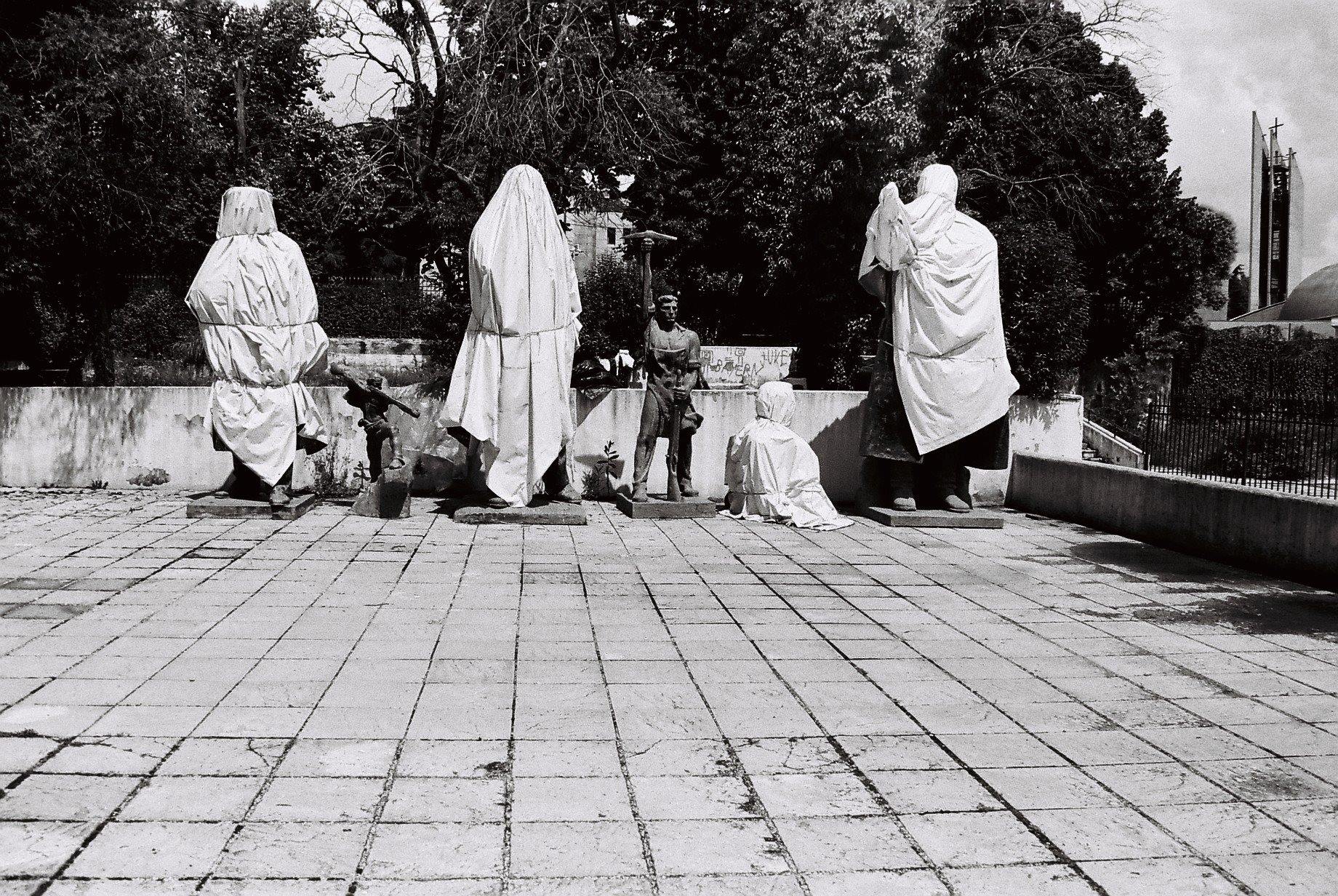
When I shifted my focus toward racial justice in 2016, I was thirty-two. Until then I’d been focused on my own artistic work: earning an MFA in Creative Nonfiction and hopping between freelance jobs and the occasional artists residency to support those efforts. I’d long been interested in race from an academic point of view, but I had also managed to make my way through an elite education without any analysis of American Empire—which made it easy to avoid recognition of my own complicity and shirk responsibility for action.
That changed through a couple of profound anti-racism trainings: mainly a ten-week workshop provided by Antiracism Study Dialogue Circles (ASDIC), during which I sat in a church basement with a big binder of readings on my lap and realized I could no longer respect myself if I didn’t re-orient to prioritize racial and economic justice.
It’s not news that having class privilege is a greater asset than talent when it comes to pursuing the arts—when getting ahead means the devotion of significant numbers of unpaid hours, it helps to have some outside financial help.
But what of the entitlement to pursue one’s individual talent? What of the privilege to believe in one’s own pursuit of achievement and recognition? That one deserves to commit time and energy to amplify one’s voice? That one is worth being seen as exceptional? Put another way: how did my whiteness contribute to the permission I felt to pursue being an artist? To pursue achieving great things?
Becoming politicized and committing to anti-racism hasn’t meant turning away from artistic pursuits; after granting myself space away from my writing for a while, I now value the role of writing for my spiritual and professional life. I pursue publication (mostly) from the more practical perspective of earning credibility in order to teach and financially support my unpaid activist work—organizing around police abolition and reparations for writers of color. I’d like to write that I’ve let go entirely of the ego and drive toward exceptional artistic achievement that propelled me for years, but that would be a lie; we don’t just ‘let go’ of things we’ve learned since birth.
Theologian Rebecca Parker writes that, “To come of age in America as a white person is to be educated into ignorance. It is to be culturally shaped to not know and not want to know the actual context in which you live… When I speak of the ignorance created by my education into whiteness, I am speaking of a loss of wholeness within myself and a concomitant segregation and fragmentation of culture that debilitates life for all of us.”
The experience of whiteness separates me from myself. Dehumanizes me. And yet, I buy into it. I have, in the language of sociologist George Lipsitz, a “possessive investment in whiteness” that powers the system forward, that I can let protect me from fully recognizing the lies whiteness tells—that European ancestry renders me more worthy of protection, of recognition, of comfort, of wealth.
But the truth, however persistently buried, demonstrates that my belief requires other peoples’ suffering, a system that enacts systemic violence on those whose bodies aren’t white (as well as many who are)—the violence of mass incarceration and the slave labor that’s been normalized in (both public and private) prisons; the violence of sweatshop conditions in factories that manufacture electronics I use and clothes I wear; the violence of state law enforcement created to protect property and used to secure the allegiance of working class white people to the state; the violence of infrastructure that safeguards land and water for the wealthy at the cost of land and water for the poor; the violence of immigration systems that punish people for leaving countries crushed by imperial powers; and on and on.
That belief, however unconscious, harms me. It fragments me. It makes it impossible for me to be fully awake and at home in the world. When we deny a known, experienced truth, we cause ourselves anguish; as with any individuals lived harm, when white people erase the truth that our claim to whiteness depends on suffering, we create suffering in ourselves.
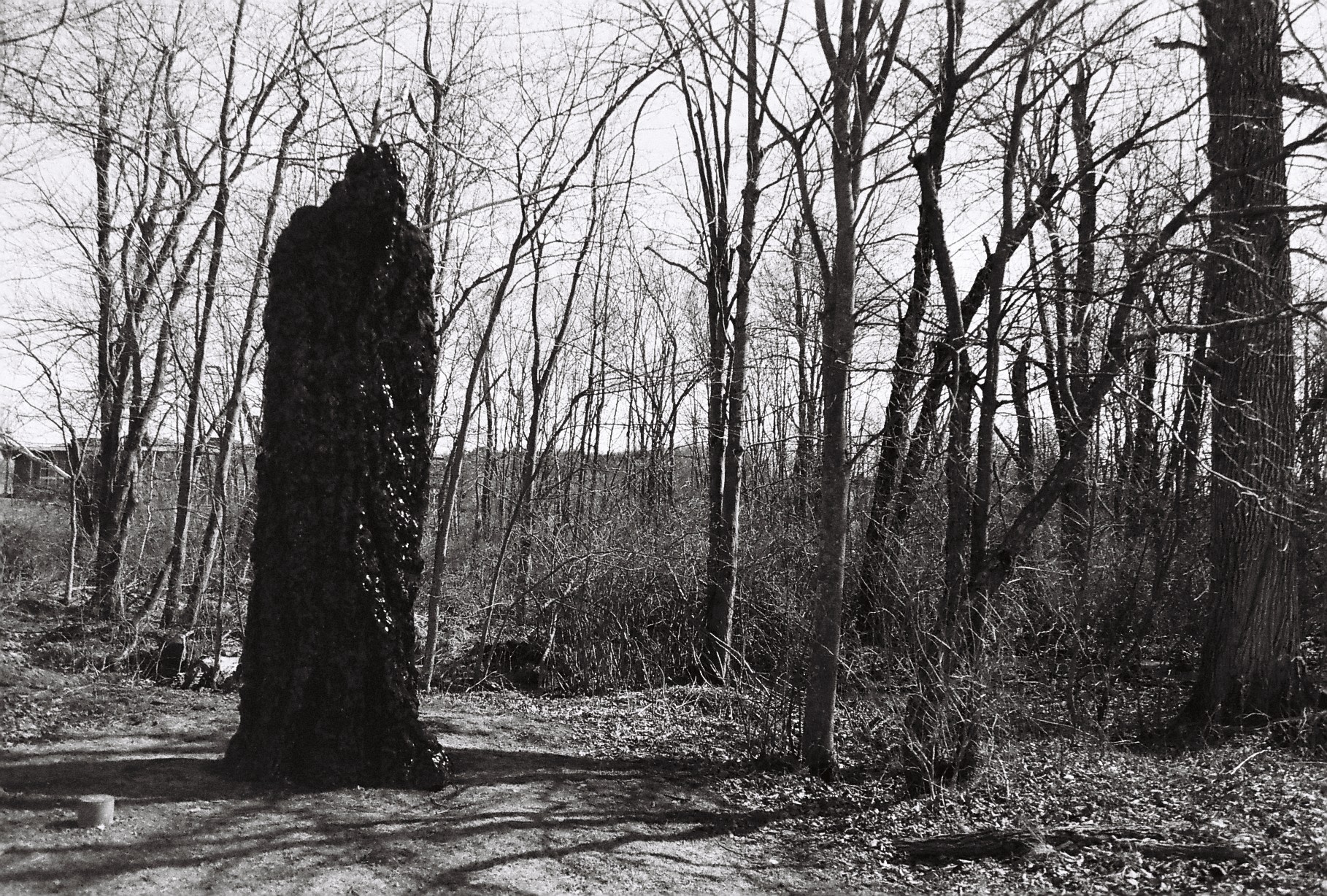
Another way of describing that moment after Trump’s election in the booth at the Irish pub is that I surfaced a fractured self: the incongruity between my unconscious emotional stake in whiteness and my more conscious, critical mind. That moment, unlike most, forced me to reckon with the fact that the little girl who so casually expressed a racist view had not gone away, she had just been silenced—tucked into corners of my psyche and soul I actively avoid.
But don’t let me diminish the fear: that losing whiteness would mean a loss of entitlement, of my ability to earn value through artistic expression or intellectual achievement, to strive for the worthiness that my whiteness underpins. That losing my whiteness would mean losing my worth.
“If you can only be tall when somebody else is on their knees,” Toni Morrison famously said, “you have a very serious problem. And my feeling is that white people have a very serious problem.”
In the days after the great author’s recent death, I saw that quote shared widely. Mostly by white people. And I wondered whether they took those lines personally, or if they disassociated themselves from them, linking them instead with white nationalists and those who express overt racist views.
I know that I tried to do that and will continue to try, and also that I can’t. Because those words speak directly to me. And to my fear: that losing whiteness could mean losing my sense of self.
Another insidious pattern of whiteness: being so critical of ourselves and other white-bodied people to a degree that dehumanizes us further. That’s the last thing we need and the last thing I want to do.
What I want to say is that the work of reparations—which begins, most urgently, with yielding resources and space to people of color—also requires white people to engage in the work of repairing our souls so that we may be in right relationship with one another, and with ourselves. To do that, we must find ways to believe in our worth as individuals that don’t, implicitly or materially, compromise that of other people. We must escape the ways in which we’ve been taught that individual worth derives from an exceptional nature, or exceptional achievement.
The Catholic theologian Henri Nouwen writes about his experience living among people with intellectual disabilities: how it became an object lesson in each individual’s unique and innate gifts.
If it is possible to suggest in a non-cloying way: every person and the combination of genetic makeup and singular lived experience we contain is special. We want to be seen as exceptional because we want to be loved and accepted—as, indeed, we all deserve to be.
In striving toward wholeness, we must see that it is not exceptionality that renders us deserving; that we are all, equally, worthy of opportunity for resources and space and connection and love.
Badger, Emily. “Whites Have Huge Wealth Edge Over Blacks (but Don’t Know It).” New York Times, 18 Sept. 2017, www.nytimes.com/interactive/2017/09/18/upshot/black-white-wealth-gap-perceptions.html.
Bertrand, Marianne, and Sendhil Mullainathan. “Are Emily and Greg More Employable than Lakisha and Jamal? A Field Experiment on Labor Market Discrimination.” National Bureau of Economic Research, July 2003, www.nber.org/papers/w9873.
Feagin, Joe R. The White Racial Frame: Centuries of Racial Framing and Counter-Framing. Routledge, 2009.
Glantz, Aaron, and Emmanuel Martinez. “Modern-day redlining: How banks block people of color from homeownership.” Chicago Tribune, 17 Feb. 2018, www.chicagotribune.com/business/ct-biz-modern-day-redlining-20180215-story.html.
Gonen, Yoav. “New York City falling short on pledge to put AC in every classroom.” Chalkbeat, 9 Apr. 2019, www.chalkbeat.org/posts/ny/2019/04/09/new-york-city-falling-short-on-pledge-to-put-ac-in-every-classroom.
Lipsitz, George. The Possessive Investment in Whiteness: How White People Profit from Identity Politics. Temple University Press, 1998.
Lopez, German. “Donald Trump’s long history of racism, from the 1970s to 2019.” Vox, 15 July 2019, ww.vox.com/2016/7/25/12270880/donald-trump-racist-racism-history.
Marksjarvis, Gail. “Why black homeownership rates lag even as the housing market recovers.” Chicago Tribune, 21 July 2017, www.chicagotribune.com/business/ct-black-homeownership-plunges-0723-biz-20170720-story.html.
Morrison, Toni. Interview by Charlie Rose. Charlie Rose. PBS. 7 May 1993. Television.
Olson, Kristina R. “Are Kids Racist?” Psychology Today, 2 Apr. 2013, www.psychologytoday.com/us/blog/developing-minds/201304/are-kids-racist.
Parker, Rebecca. “Not Somewhere Else, But Here: The Struggle for Racial Justice as a Struggle to Inhabit My Country.” Soul Work: Anti-Racist Theologies in Dialogue, ed. by Marjorie Bowens Wheatley & Nancy Palmer Jones, Skinner House Books, 2002, pp. 171-184.
Reeves, Richard V, and Dimitrios Halikias. “Race gaps in SAT scores highlight inequality and hinder upward mobility.” Brookings, 1 Feb. 2017, www.brookings.edu/research/race-gaps-in-sat-scores-highlight-inequality-and-hinder-upward-mobility.
*Singleton, Jermaine. “Out of the Hands of Others’ Fantasies: Minority Mental Health in the Eye of Neoliberalism’s Storm.” Stillpoint Magazine 1.1, 2019, www.stillpointmag.org/articles/out-of-the-hands-of-others-fantasies.
Tatum, Beverly Daniel. Why Are All the Black Kids Sitting Together in the Cafeteria: And Other Conversations About Race. Basic Books, 1997.
Troy, Gil. “The Racist Origins of the SAT.” The Daily Beast, 24 May 2019, www.thedailybeast.com/the-racist-origins-of-the-sat.
Wagner, Peter. “Incarceration is not an equal opportunity punishment.” Prison Policy Initiative, 28 Aug. 2012, www.prisonpolicy.org/articles/notequal.html.
ELIZABETH TANNEN writer
Elizabeth Tannen holds an MFA in Creative Writing from the University of New Mexico. She writes, educates and organizes in Minneapolis, where she is part of the Minneapolis Catholic Worker community.
PAMELA COHN artist
Pamela Cohn is a Berlin-based writer, artist, moving image curator, and nonfiction story consultant working between US, UK and Europe. She is the author of the book Lucid Dreaming: Conversations with 29 Filmmakers, forthcoming autumn 2019 from OR Books, New York.
© Copyright for all texts published in Stillpoint Magazine are held by the authors thereof, and for all visual artworks by the visual artists thereof, effective from the year of publication. Stillpoint Magazine holds copyright to all additional images, branding, design and supplementary texts across stillpointmag.org as well as in additional social media profiles, digital platforms and print materials. All rights reserved.
